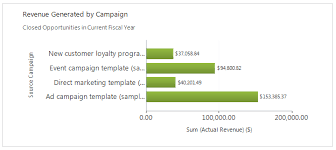In today’s competitive business landscape, organizations are constantly searching for ways to increase revenue and enhance customer engagement. One of the most powerful tools for achieving both is a Customer Relationship Management (CRM) system. When combined with well-planned marketing campaigns, a CRM can be a revenue-generating engine that helps businesses build stronger customer relationships, improve customer retention, and optimize sales processes.
This article explores how integrating CRM systems with effective campaign strategies can maximize revenue growth and provide valuable insights into customer behavior.
1. What is CRM and Why It Matters for Revenue Growth
A CRM system is a software platform designed to manage a company’s interactions with current and potential customers. It centralizes customer information, tracks communications, and organizes sales, marketing, and support activities. CRMs empower businesses to streamline operations, personalize customer experiences, and improve engagement throughout the customer lifecycle.
For companies focused on revenue growth, a CRM offers the following key benefits:
- Customer Data Management: CRMs store detailed information about each customer, including preferences, previous interactions, and purchase history. This data enables companies to understand their audience better and craft personalized campaigns that resonate with potential buyers.
- Sales and Marketing Alignment: CRMs improve coordination between sales and marketing teams by providing a shared platform for tracking customer interactions and campaign performance. This alignment helps streamline the customer journey from lead generation to conversion.
- Automation: By automating tasks like lead nurturing, follow-ups, and reporting, CRMs help companies focus on high-value activities that directly contribute to revenue.
With CRM’s capabilities, companies can build effective campaigns that drive sales and generate meaningful insights into customer behavior.
2. Leveraging CRM to Power Campaigns That Drive Revenue
Marketing and sales campaigns are essential for driving customer acquisition, engagement, and revenue growth. Integrating these campaigns with a CRM allows businesses to better manage their efforts, track performance, and ultimately achieve higher returns. Here’s how CRM systems can enhance different types of campaigns to maximize revenue:
a. Email Marketing Campaigns
Email marketing remains one of the most effective channels for driving conversions and generating revenue. CRMs allow businesses to launch highly targeted email marketing campaigns by segmenting customer data and automating email workflows.
- Personalization: CRMs enable personalized email content based on customer behavior, purchase history, and demographics. For instance, if a customer has abandoned their cart, the CRM can trigger a reminder email with a personalized offer, increasing the likelihood of conversion.
- Tracking Performance: With CRM, businesses can track key metrics such as open rates, click-through rates, and conversion rates. This allows marketers to continually refine their email campaigns and focus on strategies that generate the most revenue.
b. Lead Nurturing Campaigns
Lead nurturing involves engaging prospects throughout the sales funnel by providing relevant content and timely follow-ups. A CRM allows companies to automate and manage lead nurturing campaigns, ensuring that no potential revenue is left on the table.
- Automated Follow-ups: CRMs can be configured to send follow-up emails or notifications when prospects take specific actions, such as downloading a white paper or signing up for a webinar. By staying top-of-mind, businesses can guide leads through the sales process, improving conversion rates.
- Lead Scoring: Most CRMs come with lead scoring functionality, which helps prioritize high-value prospects. Businesses can focus their nurturing efforts on leads most likely to convert, increasing revenue potential.
c. Sales Campaigns and Pipeline Management
Sales campaigns are often designed to move prospects through the sales funnel efficiently. CRMs help manage these campaigns by organizing prospects, tracking deal progress, and automating reminders for follow-ups.
- Pipeline Visibility: CRMs provide real-time visibility into the sales pipeline, helping teams identify opportunities, predict revenue, and prioritize efforts based on where leads are in the funnel. Sales teams can track each step of the journey, ensuring that no lead goes cold.
- Targeted Offers: With access to customer purchase history and behavior, sales teams can create targeted offers and incentives to close deals. For instance, based on a customer’s previous purchases, a CRM can help sales reps craft personalized proposals that align with customer needs.
3. Campaign Automation and CRM: Scaling Revenue Through Efficiency
Automation is one of the most powerful features of modern CRM systems. With automation, businesses can run marketing and sales campaigns at scale without sacrificing personalization or effectiveness. This leads to more efficient operations and faster revenue growth.
a. Automated Campaigns Based on Customer Behavior
A CRM system can trigger automated marketing campaigns based on specific customer behaviors, such as visiting a pricing page, downloading a product guide, or abandoning a cart. These timely, relevant campaigns can significantly increase conversion rates.
- Example: An e-commerce company can use its CRM to automate retargeting campaigns for customers who have browsed products but haven’t made a purchase. A series of personalized emails with special offers or product recommendations can be sent to entice them back to complete their purchase.
b. Reducing Manual Work and Focusing on High-Value Activities
CRM automation reduces the need for manual data entry and administrative tasks, allowing teams to focus on strategic initiatives that drive revenue. By automating follow-ups, lead scoring, and data updates, sales and marketing teams can dedicate more time to closing deals and refining campaigns.
- Example: Instead of manually following up with every lead, the CRM automatically schedules follow-up emails based on the prospect’s engagement, freeing up time for sales reps to work on high-value accounts.
c. Campaign Reporting and Optimization
One of the most valuable aspects of CRM automation is its ability to track and report on campaign performance. By gathering data on metrics such as open rates, lead conversion, and customer lifetime value, businesses can continually optimize their campaigns for better results.
- Example: A SaaS company can use CRM analytics to identify which email campaigns lead to the most subscriptions. This insight can be used to adjust messaging, offers, and timing for future campaigns, ensuring that each campaign maximizes revenue potential.
4. The Revenue Impact of CRM-Driven Campaigns
The integration of CRM with effective campaign management leads to several key outcomes that directly impact revenue:
a. Higher Lead Conversion Rates
By centralizing customer data and improving lead nurturing efforts, CRM-driven campaigns increase the likelihood of converting prospects into customers. A well-managed CRM system ensures that every lead is engaged at the right time with the right message, ultimately driving higher conversion rates and more sales.
b. Enhanced Customer Retention and Loyalty
CRM allows businesses to deliver more personalized experiences that build trust and foster long-term relationships. By automating follow-ups, special offers, and engagement campaigns, companies can reduce churn and increase customer retention, both of which have a direct impact on revenue.
c. More Accurate Sales Forecasting
With the help of a CRM, sales teams can monitor the entire pipeline in real-time, leading to more accurate sales forecasting. Understanding which campaigns generate the most revenue allows businesses to allocate resources more effectively and make data-driven decisions.
d. Increased Customer Lifetime Value (CLV)
Through personalized marketing campaigns, loyalty programs, and post-sale engagement, CRM systems enable businesses to increase the Customer Lifetime Value (CLV). By nurturing long-term relationships and upselling relevant products or services, companies can maximize the revenue generated from each customer over time.
5. Best Practices for Integrating CRM with Campaigns to Maximize Revenue
To fully leverage the power of CRM and campaign management for revenue growth, businesses should follow these best practices:
a. Segment Your Audience
Use your CRM to segment your customer base according to specific criteria such as demographics, behavior, or purchasing history. This allows for more targeted campaigns, which leads to higher engagement and more conversions.
b. Align Sales and Marketing Teams
Ensure that both sales and marketing teams are working together within the CRM. This alignment creates a unified approach to lead generation, nurturing, and conversion, helping both teams to achieve revenue goals.
c. Regularly Analyze Campaign Performance
Use the reporting tools in your CRM to analyze the performance of your campaigns. Understanding which campaigns drive the most leads and revenue allows you to optimize future strategies for even greater success.
d. Focus on Long-Term Relationships
Don’t just focus on one-off sales. Use CRM data to build long-term relationships with customers by offering personalized experiences and continuing engagement after the initial purchase. This will increase customer loyalty and revenue over time.
Conclusion: CRM as a Revenue-Driving Engine
A well-implemented CRM system is much more than just a tool for managing customer data—it’s a powerful engine for driving revenue growth. By integrating CRM with your marketing and sales campaigns, businesses can ensure that every customer interaction is meaningful, personalized, and designed to generate maximum value.
From increasing lead conversion rates to enhancing customer loyalty, CRM-driven campaigns offer a strategic advantage that directly contributes to higher revenue. When properly executed, these campaigns enable businesses to scale their efforts, improve efficiency, and capture more opportunities in an increasingly competitive marketplace.








